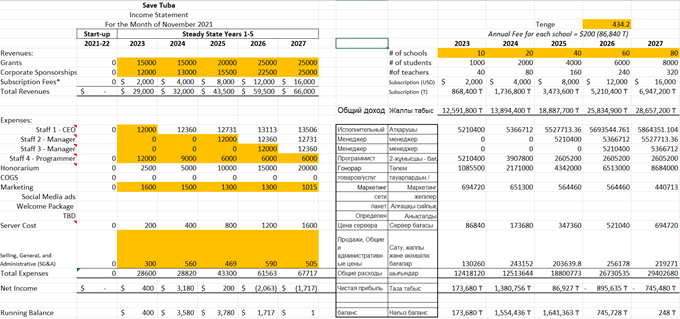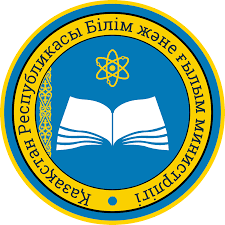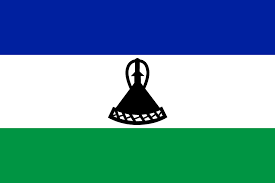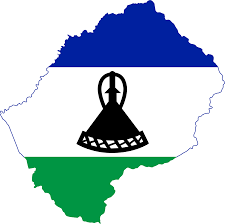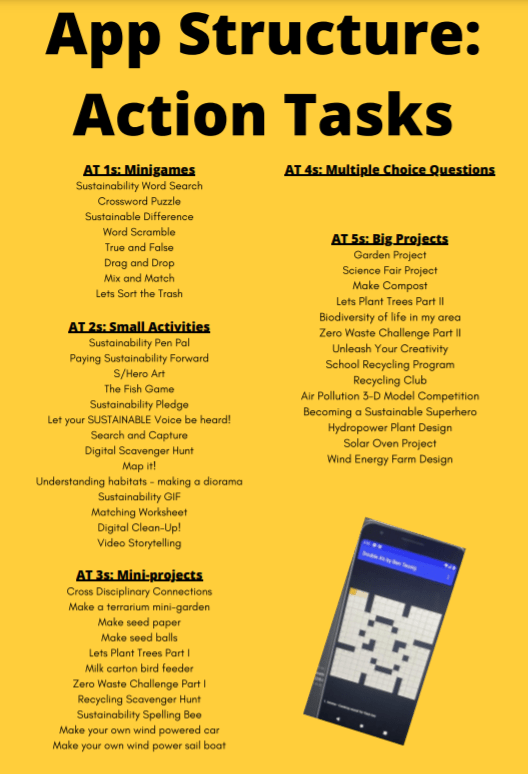Part 1: Ethical Decision-Making
Step 1: Determine the facts in the situation – obtain all of the unbiased facts possible. Clearly state the ethical issue.
- HIV/AIDS is prominent in the region and the risk of transmission to a child increases over time during prolonged breastfeeding.
- Scientific research shows that gruel does not provide some key nutrients.
- Approximately 500 women from three contiguous sub-locations are interested in being part of the cooperative.
- Gruel is currently integrated into a child’s diet until about two years old to supplement breastfeeding.
- Pesticides are typically used to grow some of the crops used in the porridge.
- The goal of the cooperative is to:
- 1) Improve the nutritional status of children
- 2) improve the livelihoods of rural households
Ethical Issue: how to wean mothers from breastfeeding their children after the of 6 months to minimize the risk of transmitting HIV while simultaneously encouraging mothers to feed porridge instead of the trusted gruel despite the use of pesticides in the current cash crops.
Step 2: Define the Stakeholders – those with a vested interest in the outcome.
- Mothers in East Africa
- Infants/children
- We/Us/Me/Donor
- The Cooperative
Step 3: Assess the motivations of the Stakeholders
- Mothers in East Africa
- Personal
- To not transfer HIV/AIDS to their children, to ensure their children are fed nutrition foods for growth and development, to have some level of breastfeeding and bonding in that way with their child, to create an income and food source for the family
- Professional
- To produce shelf-stable porridge, to make money for their families through this venture, and to grow/learn as entrepreneurs
- Infants/children
- Personal:
- to be fed, to not contract HIV/AIDS
- Professional:
- We/Us/Me
- Personal
- To feed the individual ego as a result of helping others; feel good for doing good
- Professional
- To make an impact on the health and well-being of infants/children and mothers in East Africa
- You want to be successful to increase your chance of getting more grants
- Cooperative
- Personal
- Ensure everyone’s children of the Cooperative are fed, support mothers grow the crops needed to create a healthier meal (porridge vs. gruel) to impact growth of children, and help minimize the spread of HIV to children
- Professional
- Produce enough supplies for the porridge
- Want to be economically viable
- Donor
- Personal
- To have a good result, increasing their positive presence and ego as an organization
- To grow the agency’s Goodwill
- Professional
- To spark self-sufficiency efforts with families in East Africa
- To fund efforts that decrease HIV rates of children in East Africa
- To have that experience and have that enable future involvement in cooperatives similar to this one
Step 4: Formulate (at least three) alternative solutions – based on information available, using basic ethical core values as a guide.
Potential solution #1: Do nothing other than establishing the cooperative.
- Ethical Principle or code: Consequence based thinking
- Pros
- Help with livelihoods of those in the cooperative
- Make an impact on the growth of the children who consume the more nutritious porridge
- The risk from pesticides is less than the transmission of HIV/AIDS from prolonged breastfeeding
- Cons
- Fails to make an impact on reducing the possibility of HIV+ mothers transmitting the virus to their infant children
Potential solution #2: Incorporate the porridge (made with locally grown vegetables/fruits) into the current gruel to make it more familiar but have a new and improved gruel that provides nutrients and protects from the transmission of HIV/AIDS.
- Ethical Principle or code: Consequence based thinking
- Pros
- Allows for women to continue feeding their children a slightly altered version of what they are familiar with and trust (gruel) yet incorporates ingredients to impact nutrition and prevent HIV for their children
- Improves the children’s nutritional status
- Builds nutrition into the current food which could increase buy in to this food
- Cons
- Some may not want to change from the gruel because they believe it is nutritious
- Some may see an outsider taking their gruel recipe as an insult and intruding on tradition.
Potential solution #3: Move forward with establishing the cooperative and simultaneously provide education on HIV transmission, specifically on mother to child transmission via breastfeeding AND education and training related to farming with alternatives to pesticides (ie. plant a variety of species, rotate crops regularly, choose pest-resistant garden plants that provide habitat for wildlife, use gardening techniques that encourage vigorous plant growth and discourage pests).
- Ethical Principle or code: Virtue based thinking
- Pros
- Would have a positive impact on both cooperative goals of having an impact on the nutritional status of children and livelihoods of the families involved
- May decrease HIV/AIDS transmission as mothers increase education
- May increase participation in the cooperative as the food is safe to eat
- Cons
- May not decrease HIV/AIDS transmission as fathers don’t receive the education and do not change behavior
Step 5: Seek additional assistance, as appropriate – engineering codes of ethics, previous cases, peers, reliance on personal experience, inner reflection.
This case provides an added layer of complexity with the competing issues that need to be addressed. The ethical questions related to breastfeeding or not past six months AND the families’ practice and trust with the gruel vs the donor’s intent for mothers to feed porridge creates sensitive issues to manage in order to have a successful cooperative. Like other cases, the challenge to me is viewing the situation through the context of the mothers (and men) from the East Africa region. Instead of suggesting solutions that would be aligned with my Western/American philosophy, the group discussion continuously circled backed to questioning if this would be something that the mothers/men of East Africa would see as an imposition or if it would be a true possible solution to come from them.
Step 6: Select the best course of action – that which satisfies the highest core ethical values. Explain reasoning and justify. Discuss your stance vis-a-vis other approaches discussed in the class.
Despite the concern raised in the class discussion that the best course of action should minimize taking the venture away from its core project of establishing the cooperative, I believe that the third solution (establishing a cooperative in conjunction with HIV and pesticide free farming education) is the best course of action. The issues are too interconnected to do one (the cooperative) without addressing the others (HIV transmission and healthier crops). The cooperative is an excellent strategy that provides multiple benefits to participants and their families. To name a few of the benefits:
- Develop the mothers’ farming and entrepreneur skills
- Steady source of food and income for the families
- Creates an opportunity for mothers to build their identity and have community
The additional benefits related to adding the educational components help minimize the Donor imposing their way of thinking. Instead, the education provides the mothers with information about preventing the transmission of HIV from mother to child. They also learn about healthy farming alternatives. The education will help them make an informed decision on breastfeeding and the use of pesticides, a decision that should ultimately be theirs (and their families) to make and not the donor.
Unfortunately, the other solutions either ignore the interconnected ethical dilemmas or exclude the mothers from making an informed decision.
Step 7: (If applicable) What are the implications of your solution on the venture. Explain the impact of your proposed solution on the venture’s technology, economic, social, and environmental aspects.
The solution to establish the cooperative, provide education related to HIV transmission from mother to child via breastfeeding, and education on pesticide free farming will have numerous impacts on the venture since it expands the strategies to accomplish the donor’s intent.
- Technology – The addition of the educational components will require an educational plan and supporting resources (collateral materials like pamphlets, presentations, and/or videos). Additionally, all materials will need to be translated and carefully reviewed to ensure they are sensitive to East African culture.
- Economic – There will be additional costs associated with the collateral materials. Also, there will be a financial impact on the venture if additional staff/instructors are needed to facilitate the educational workshops.
- Social – The addition of an educational component to the venture may alter how the mothers (and the men in their household) view the opportunity. The addition of an educational component could be threatening if perceived by the community as a way to change their norms and customs.
- Environmental – The proposed solution would be beneficial to the environment since it will provide healthier alternatives to both cash and substance crops. The lessons learned around farming with alternatives to pesticides benefits both the consumers and the environment.
PART 2: Grassroots Diplomacy Strategy Development Methodology
Step 1: Determine the facts in the situation – obtain all of the unbiased facts possible.
- The cooperative is successful
- Mothers make about $3 a day
- Mothers work about 9 hours per day
- Mothers have the opportunity to sell produce grown on their small farms to the cooperative
- Transactions (when selling their products at the public market) are at prevailing market rate
- Mothers are happy working at the cooperative
- Mothers establish a sense of community and identity
- Mothers have to turn the money over to males in the home (husband, brother, father)
- Men waste money earned by mother on alcohol and frivolous things
- The twin social outcomes of improving the nutritional status of children and the livelihoods of rural households are not being achieved
- You (entrepreneur) are loved by the community
- You do not have direct say in the cooperative’s functioning
- You are one of seven members of the leadership team leading the operations, other six members are local women who understand the problem and want a change
- The women are convinced that nothing can be done (about the mothers turning over their earned profits to the men) because that’s just how it works
Step 2: Define the problem and the stakeholders – those with a vested interest in the outcome.
- Mothers in East Africa
- Infants/children
- We/Us/Me/Donor
- The Cooperative
- Husbands/Fathers/Brothers (Men in household)
The problem: Mothers are making money and enjoying the cooperative, but are not using the money to provide nutritious diets to their families as fathers and men are using the money for alcohol and other frivolous things.
Step 3: Determine and distinguish between the personal and professional motivations of the stakeholders.
- Mothers in East Africa
- Personal
- To not transfer HIV/AIDS to their children, to ensure their children are fed nutrition foods for growth and development, to have some level of breastfeeding and bonding in that way with their child
- Professional
- To produce shelf-stable porridge and make money for their families through this venture.
- Infants/children
- Personal:
- to be fed, to not contract HIV/AIDS
- Professional:
- We/Us/Me
- Personal
- To feed the individual ego as a result of helping others; feel good for doing good
- Professional
- To make an impact on the health and well-being of infants/children and mothers in East Africa
- Cooperative
- Personal
- Ensure everyone’s children of the Cooperative are fed, support mothers grow the crops needed to create a healthier meal (porridge vs. gruel) to impact growth of children, and help minimize the spread of HIV to children
- Professional
- Produce enough supplies for the porridge
- Want to be economically viable
- Donor
- Personal
- To have a good result, increasing their positive presence and ego as an organization
- To grow the agency’s Goodwill
- Professional
- To spark self-sufficiency efforts with families in East Africa
- To fund efforts that decrease HIV rates of children in East Africa
- To have that experience and have that enable future involvement in cooperatives similar to this one
- Husbands/Fathers/Brothers (Men in household)
- Personal
- They receive free money that they didn’t work for
- They can indulge in pleasures such as drinking with the money
- They benefit from the crops the mothers bring home
- Professional
- They may be able to work less because the mother is bringing home money
Step 4: Formulate (at least three) alternative solutions – based on information available, to have a win-win situation for your relationship and your venture.
- Potential Solution #1: Pay the Mothers in an alternative currency (“food stamps” or WIC)
How does it solve the problem?
The mothers are compensated in a form that minimizes misuse of the profits. The alternative currency will limit the use of the non-cash payment only for the purchase of food – aligning use of the earned profits with the donor’s original intent to improve nutritional status of children and livelihood of the families.
o Pros
- Money is going towards feeding their families
- Money goes to improve livelihood
- Mothers have more control over the use of the money they earn
- Mothers feel a sense of empowerment and support from the Leadership Committee
o Cons
- Difficulty that comes with setting up a new system as an alternative to cash payment
- Husbands/Fathers/Brothers (Men in household) might be against the system
- Husbands/Fathers/Brothers (Men in household) might discourage the women’s participation with the cooperative
How does it save the face of those involved?
- It saves face by preventing conflict with the men in the household who use the profits for alcohol or frivolous things instead of healthy/nutritious food for the household. The cooperative nor the mothers do not have to confront the men in the household for misuse of the profits.
Implications on relationships –
o Short-term
- Mothers get to control their hard-earned money allowing them to have less conflict with the men in their homes
- Their families may receive more food as they spend the money on the intended use, lessing stress and conflict in the home
- Cooperative will earn more trust from the Mothers for finding a solution to the conflict that they were willing to forgo
o Long-term
- The children (and the household members) have a more nutritious and plentiful diet. Hence, relationships between participants, the men and the Cooperative leaders can grow and be strong.
- Decreases drinking from fathers as they cannot afford it causing longer life and increasing their health
Implications on the venture –
o Short-term
- Is better positioned to accomplish the second goal of the venture
- Mothers are further empowered and contributors to the household livelihood and their child/ren’s well being
o Long-term
- create a way for money to be funded to families without male influence on the spending while focusing the money on family needs
Potential Solution #2: Engage the men in the external market responsibilities (conversations about what foods can be grown, offer jobs in the market)
How does it solve the problem?
-
- It brings the men into the conversation about feeding the children, which could influence the spending of money on the family and not on pleasures desired from the men.
o Pros
- protects the space for the mothers to maintain their sense of community and identity
- engages the entire household with the goal of improving the livelihood of the families
- better chance of sustainable behavior (with farming and managing the “business” at the market) if the venture is a shared responsibility beyond the mothers
- Men are able to earn some of the money and use that to buy their desired goods
o Cons
- Incorporating the men, even if for just part of the venture, could limit the experience for the Mothers
- Raises the question of who is going to take care of the children
How does it save the face of those involved?
- This solution allows women to maintain the community established with other mothers of the cooperative while allowing the men to also be providers for the household AND have discretionary earned dollars to buy their alcohol and frivolous things. The solution saves face with the men, especially, by allowing them the opportunity to be part of the venture and earn money instead of the alternative of confronting them for not assisting with the work but taking the profits.
Implications on relationships –
o Short-term
- Less resentment or negative feelings towards the men from the Mothers that earned the money
- Greater admiration for the leadership committee from the Mothers for finding a win-win solution
o Long-term
- families may increase time together as they work out the cooperative (creating a stronger family unit)
Implications on the venture –
o Short-term
- may become harder to pay men for work with funding
- Could dilute the focus initially aimed at the mothers
o Long-term
- creates a more well-rounded venture as both members of the household are involved in the cooperative and market, allowing for even more buy-in from the community
- Potential Solution #3: Create saving accounts for the mothers to deposit the money before leaving the cooperative and can withdraw within the workday.
How does it solve the problem?
- This protects the mothers from having to deal with turning over their hard earned money since they would not have it as currency when they arrive at their homes. The Collective can assume the responsibility of managing the profits, serving as a middleman between the mothers and the men taking away their profits.
o Pros
- it keeps the money from going home to the men for alcohol
- The money can be used for the food and family
- The women will be able to make a direct impact on the family’s livelihood and the food to impact the nutritional status of their children
o Cons
- men might discourage women from going if they don’t see money
- Men might feel that the money is being withheld from them
How does it save the face of those involved?
- This solution saves face for the leadership committee since they don’t have to face a conflict with the men. Although the mothers would not confront the men or refuse to give up the money if asked, this solutions saves face since they are not even put in the situation to even have to consider refusing to give their money to the men.
Implications on relationships –
o Short-term
- Gives women the responsibility and choice of spending habits, thus strengthening their relationship with the cooperative and the leadership committee
o Long-term
- creates equity and could turn into bank accounts for women, changing societal power dynamics in a manner that is not obvious to the men
Implications on the venture –
o Short-term
- it fulfills the goal of increasing nutritional status and livelihood of the household
o Long-term
- can turn into another grant to develop a bank and equity building opportunities for women in the community
- Better ensures the sustainability of the cooperative
Step 5: Seek additional assistance, as appropriate – previous cases, peers, reliance on personal experience, inner reflection
The class discussion offered similar variations of our team’s solution of providing an alternative payment to cash. Our idea of establishing an Electronic Benefit Transfer (EBT) system or a voucher system similar to the Special Supplemental Nutrition Program for Women, Infant, and Children “WIC” program seemed to be a solution that resonated with the entire class.
Similar to other cases, our/my challenge with brainstorming solutions is to avoid veering too far away from the original intent of the venture. One of our alternative solutions would be to create a “bank”, which may sound simple to do but would require significant resources (ie staff, technology, record keeping systems).
Step 6: Select the best course of action – that solves the problem, saves face, and has the best short-term and long-term implications for your relationship and venture. Explain reasoning and discuss your solution vis-a-vis other approaches discussed in class.
Although all three solutions suggested by my team provide significant benefits with limited negative implications, I believe that the best course of action would be to provide an alternative form of payment (ie EBT or vouchers) to the mothers. The original intent of the venture would best be accomplished with this solution. The second suggestion of incorporating the men would be a great expansion opportunity in the future, but the immediate intent is to help mothers be able to improve the nutritional status of their children and improve the livelihoods of their households. Including the men would bring a host of challenges that would dilute resources from the main goal.
The creation of an EBT/voucher system could easily be explained by the mothers to the men, helping them save face when confronted at home. The mothers are dealing (or not) with the conflict they feel for having to turni over the money for alcohol and other frivolous things. Instead, this solution will allow the mothers to help with the nutrition of their children and the livelihood of their households.
Step 7: List the sequence of actions you will take to implement your solution.
- Discuss the idea of establishing an EBT/voucher program with the leadership committee to secure buy-in and consensus.
- Jointly create the rules and regulations for managing the EBT/voucher with input from the mothers and the leadership committee
- Establish collaboration with markets/stores that the EBT/voucher program can be used in
- Recruit volunteers/staff to manage the alternative system (maintain records, maintain partnerships, and grow network of participating markets/stores)
- Train the mothers on the EBT/voucher system
- Leadership Committee regularly reviews the key performance indicators (number of markets, dollars used by the mothers for food purchase, customer satisfaction)

